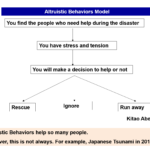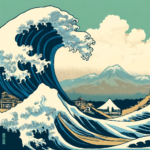The chronology will be improved little by little. This is the first draft version. The information source will be shown later. In addition, other some events will be explained.
| Date | Place | Disaster Type | Situations |
| 1978.01- | US, East | Cold wave | The dead and missing number is 160 |
| 1978.02- | US | Disease | Influenza, the dead number is over 6,000 |
| 1978.04.16 | India | Tornado | The dead and missing number is over 600 |
| 1978.06.12 | Japan, Northeast | Submarine Earthquake | 1978 Miyagi ken Oki earthquake M7.4, The dead number is 28 |
| 1978.07- | Bangladesh | Heavy rain, Flood | The dead and missing number is over 120 |
| 1978 | Pakistan | Heavy rain, Flood | The dead and missing number is over100 |
| 1978.08- | India | Heavy rain, Flood | The dead and missing number is 900-1,300 |
| 1978.09- | Africa, East | Disease | The dead number is over 350 |
| 1978.09.16 | Iran, Central | Inland Earthquake | 1978 Tabas earthquake* M7.2-7.8, The dead and missing number is 18,000-25,000 |
| 1978.10- | India | Disease | The dead number is over 480 |
| 1978.11- | Sri Lanka, and others | Typhoon, Flood | The dead and missing is 1,500 |
*1978 Tabas Earthquake
The one of the most earthquake vulnerable countries in Asia is Iran. Iran had 16 times earthquakes in the 1800s and 18 times earthquakes in the 1900s which caused over 1000 deaths. In particular, the one of the main causes of deaths is a building structure, called adobe.
Adobe is a kind of clay used as a building material, typically in the form of sun-dried bricks (Oxford dictionaries).
In dry climates, adobe structures are extremely durable, and account for some of the oldest existing buildings in the world. Adobe buildings offer significant advantages due to their greater thermal mass, but they are known to be particularly susceptible to earthquake damage if they are not somehow reinforced. Adobe are common throughout the world such as Middle East, West Asia, North Africa, West Africa, South America, southwestern North America, Spain, and Eastern Europe (Wikipedia).
“Adobe and earthquakes are a perverse and tragic combination”
“The people on the street are killed by the walls that fall out, the people inside are killed by the roof that falls in” says Mr Marcia Blondet (A Peruvian engineer). (BBC).





